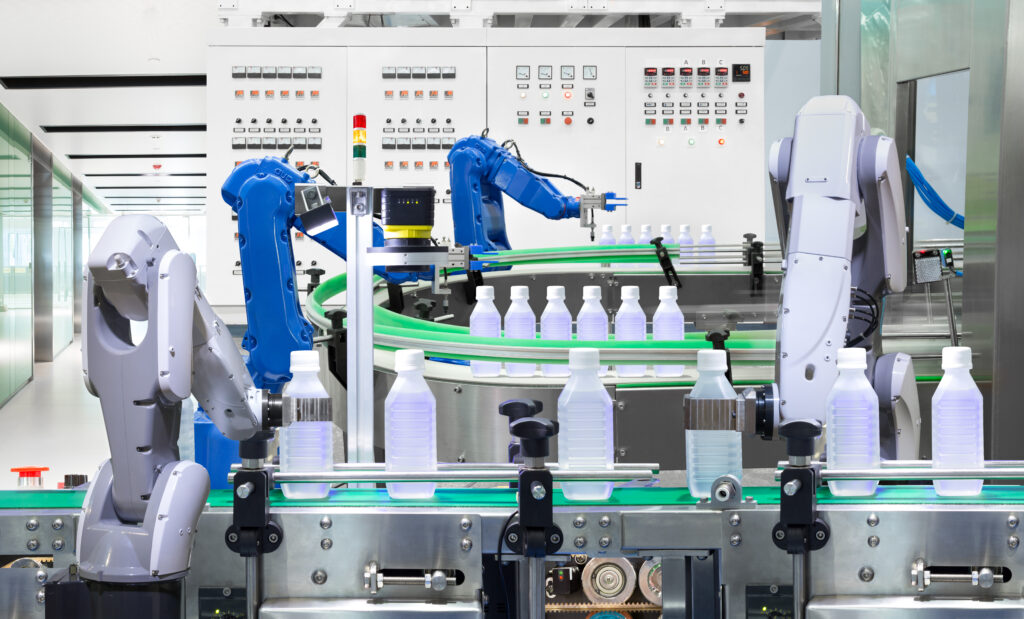
Robotics and the food industry
Technology that provides food producers with real-time data analytics enables them to optimize the use of energy and raw materials, reduce food and energy waste, and achieve higher production capacities.
October 5, 2022 | By Dana McCauley
 Photo: Kinwun / istock / getty images
Photo: Kinwun / istock / getty images 
Photo: Kinwun / istock / getty images
The Canadian food industry is facing numerous challenges, from labour shortages and supply chain disruptions, to increasing input costs and changing consumer expectations. Many of these challenges can be addressed by automating processes so they can be made faster, safer, and more reliable.
While the shift to automation has been slower in the food industry than in other industries, the use of automation, robotics and data analytics has the potential to transform Canada’s food and beverage industry. By investing in technology, the industry could become more agile, traceable, and transparent, while growing capacity and ensuring our food supply chain remains strong, safe, sustainable, and competitive in the world market. Automation also has the potential to help with labour attraction and retention, since it can make work safer for employees, can boost profitability for businesses, and even help them expand into non-traditional areas such as in airports, hotels, and conferences.
The Canadian Food Innovation Network (CFIN) is a not-for-profit organization with a mandate to help grow Canada’s economy by helping to accelerate innovation in the food industry through connections, collaborations, and investments across Canada’s food ecosystem. CFIN offers funding programs and services that help food businesses, and their partners bring innovative ideas
to life.
Seeing is believing
This past spring CFIN presented Robotics in Action: Seeing is Believing, a virtual event hosted by Jim Beretta, president of Customer Attraction, which focuses on robotics, automation and applications. Beretta spoke with several Canadian entrepreneurs whose companies are leading technological change in the food industry, and demonstrated automation solutions at Western University, including Mycionics, Ghost Kitchen Brands and 168 Sushi, and robotic systems from SJW Robotics, Anubis 3D, Gastronomous Technologies, JMP Solutions, Armo Tool and Tiny Mile Robotics. Beretta was also a speaker at Food and Beverage Magazine’s recent Max Uptime event, where he presented How Robotics is Changing Food.
Some key takeaways from the presentations are:
Automation and robots don’t reduce jobs
Robots and automatic systems are designed to do the tasks that are dangerous, dirty, or repetitive, and are a solution to current labour shortages in the industry. While robots perform tasks such as picking and packing, employees are freed up to complete more value-added and skilled duties. Collaborative robotic systems are designed with added safeguards so they work side-by-side with their human counterparts.
The cost of automation is dropping
In the last decade, costs of implementing automatic systems or robotics have fallen, while performance and consistency have increased dramatically. There are also many new advancements in gripping technology, resolving older robotic challenges such as distinguishing between different-sized and shaped products or boxes.
Robotic systems fit into existing operations
Automation systems and robotics are now easier to integrate into food operations and are often designed so that companies can add one piece of technology at a time, ensuring success and worker comfort. Working together with technology companies, food businesses can integrate plug-and-play components or create unique, custom-designed system featuring different technology modified to fit their needs.
Automation allows operators to optimize energy and materials
Technology that provides food producers with real-time data analytics enables them to optimize the use of energy and raw materials, reduce food and energy waste, and achieve higher production capacities. Data analytics can also be used to predict preventative maintenance in the system and prevent drops in throughput. Many companies rely on robotics that target sanitary compliance to assemble foods safely and reliably such as protein and uncooked ready-to-eat meals for retail or healthcare, where safe food handling is crucial.
Automated foodservice offerings go far beyond vending
Quick-service kiosks that offer a wide range of hot and cold food choices like salad, pizza and cooked noodles are appearing on campuses, in malls, and in other public spaces. Far beyond vending machines, the kiosks offer made-to-order meals prepared while you watch in just minutes, with a variety of customizations and payment options available. With a low carbon footprint and minimal labour needs, the kiosks have the potential of replacing QSR units in some locations.
________________
Dana McCauley is the Chief Experience Officer at the Canadian Food Innovation Network.
